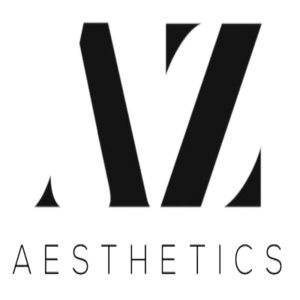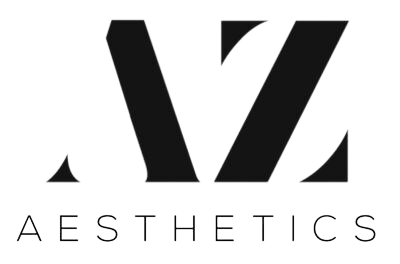Platelet Rich
Plasma (PRP)
Face Treatment
(PRP) Face Treatment is an established injection therapy to enhance tissue regeneration. PRP therapy is an excellent treatment that uses a small amount of your own blood to stimulate the production of collagen and new skin cells.
WHAT ARE THE BENEFITS (PRP) Face Treatment?
The potential benefits of (PRP) Face Treatment have led to widespread interest in its use for anti-aging and regenerative purposes. The healing properties of the blood components in (PRP) Face Treatment can be used as a cosmetic treatment for the following:
Reducing fine lines and wrinkles
Tightening and toning skin
Mild collagen and volume loss
Crow’s feet and dark under eye circles
Acne scarring
Rosacea
Stimulates new cell growth
Improves skin tone and texture
Improves skin complexion
Helps with first signs of ageing
Improves skin complexion
(PRP) Face Treatment therapy is predominantly used on the face, particularly around the eyes, mouth and nose although it may be used on the backs of the hands and all over the body, more commonly the décolletage to give a more youthful and radiant appearance.
WHO CAN BE CANDIDATE FOR
PRP FACE TREATMENT?
As with the majority of cosmetic procedures, the best female candidates are ladies who are not pregnant, breastfeeding or trying to conceive. In addition, this treatment is not recommended for people undergoing anticoagulation treatments, suffering from autoimmune conditions, or who have contracted any type of cancer, have severe anaemia, low platelet count, abnormal platelet function and active systemic infection may not be eligible.
(PRP) Face Treatment offer clients long lasting, effective skin rejuvenation through the body’s own platelets and natural processes.
PRP Face Treatment Prices
Free Consultation
WHAT IS A(PRP) Face Treatment?
(PRP) Face Treatment therapy are skincare treatments that have rapidly swept the beauty industry, becoming many people’s go-to procedure for a quick and lasting beauty pick-me-up.
(PRP) Face Treatment are replenishing, nutrient-rich treatments, designed to make use of the body’s own natural resources and incredible capacity for healing. Using absolutely no artificial materials whatsoever, PRP face treatment are fantastic for both subdermal tissue repair, and surface concerns such as crow’s feet, dark circles, sun damage, acne scarring and obtrusive pores.
WHAT ARE THE ADVANTAGES OF PRP FACE TREATMENT
- (PRP) Face Treatment uses your own natural resources, minimising the risk of side effects and allergic reactions.
- (PRP) Face Treatment natural collagen production typically reduces or eliminates lines, folds and wrinkles in a gentle process with little or no swelling, bruising or lumping.
- The (PRP) Face Treatment organic nature of the procedure is ideal for those who wish to avoid synthetic products and processes.
- (PRP) Face Treatment therapy is non-gender-specific, so both men and women are able to benefit and enjoy a natural, more youthful look.
- PRP face treatment require no surgical interventions.
- The improvement to the skin’s appearance after(PRP) Face Treatment is subtle and natural, with lasting results.
WHAT IS THE PROCESS?
- We will take a sample of blood, the average sample size of a routine blood test.
- The blood is then placed in a centrifuge for a few minutes and spun at high speed.
- A sterile syringe is used to withdraw only the PRP (platelet rich plasma) from the sample.
- The plasma and serum are extracted and then re-injected back into the client’s skin, which has previously been cleansed numbed using topical anaesthetic.
The whole procedure only involves needle injections to the desired areas, requires virtually no healing time and also reduces possible side effects to a minimum.
DOES PRP HURT?
There is some minor discomfort and a very mild stinging sensation may be felt but these are done with a very fine needle to minimise any pain.
WHAT ARE THE SIDE EFFECTS?
Side effects from PRP face treatment are very mild because it is unlikely that the body will have an adverse reaction to its own materials. At most, you may expect to experience mild to moderate swelling and/or redness or heat in the area of treatment, which are common side effects in the activation of your platelets.
In addition, because a volume of fluid is administered to the area, some bruising can occur and may take afew days to disappear.
WHAT ARE THE RISKS AND COMPLICATIONS?
All non-invasive treatments carry a small element of risk, which is why at Prity Salon we only carry out treatments after a face to face consultation, during which we will assess you, and detail the cautions and contradictions for the procedure.
HOW LONG AFTER THE PRP INJECTIONS BEFORE
I SEE A CHANGE?
Clients will usually feel the immediate effects of PRP therapy after it is performed and during the next few weeks the collagen will begin to grow and generate more and more healthy cells underneath the skin. That is when the optimum results of the procedure are felt.
DOES THE PROCEDURE NEED TO BE REPEATED?
Depending on the area treated, repeat treatments may be necessary to continue the desired effects. Facial rejuvenation procedures may require 1-3 treatments yearly, depending on the treatment.
WHY USE PRP TREATMENTS?
Platelet rich plasma injections are an alternative to medications or surgery. Ideal candidates would be those who prefer a less invasive option to surgery or those who are unable to undergo a surgery or tolerate pain medication. It allows for a much quicker recovery period and is much less painful than a surgery.
HOW DOES PRP FACE TREATMENT DIFFER FROM OTHER INJECTIONS OR FILLLERS?
PRP stimulates your own collagen to grow for total facial rejuvenation rather than individual area improvement. In contrast, hyaluronic acid fillers work by means of solid material that fill lines and skin folds in the face. These fillers are indicated to soften deeper lines such as the folds around the mouth area or to plump lips. They usually last from 6-18 months; repeated treatments are required to fill the area again.
PRP face treatment is more effective for volumising faces, plumping out cheek indentations, softening eye hollows, improve the overall tone, tightness, and texture of the skin, and filling in areas where hyaluronic acid fillers cannot reach or are not safe to use.
WHAT TO DO BEFORE AND AFTER PRP FACE TREATMENT
Prior to Treatment
To ensure that you receive the best possible results, preparation prior to treatment is a vital part of the process.
- Prepare skin with the recommended skincare regime.
- Avoid waxing or laser for 48 hours prior to treatment.
- If you are using any product/s containing vitamin A, glycolic (or any resurfacing ingredient) as a part of your skin care regime, you are advised to stop using these for seven days prior to treatment.
- Avoid anti-inflammatories (e.g. ibuprofen/aspirin) and also alcohol for 48 hours prior to treatment as this can increase the chance of bruising.
Aftercare
You will be provided with detailed aftercare information prior to leaving the salon after your PRP treatment.
CONTRAINDICATIONS
Response and number of sessions may vary by client. Smokers may require more treatment sessions that non-smokers as tobacco smoke toxins may diminish cellular responsiveness to PRP.
Book An Appointment
To book a PRP Face Treatment Consultation, please contact us today.
FAQ
PRP combined with microneedling is a cosmetic procedure that involves using the patient’s own blood (PRP) and a microneedling device to improve the texture and appearance of the skin. Microneedling creates tiny micro-injuries in the skin to stimulate collagen production, while PRP contains growth factors that enhance the healing and rejuvenation process.
The procedure typically begins with a blood draw to collect a small amount of the patient’s blood. This blood is then processed to isolate the platelet-rich plasma (PRP). Afterward, a microneedling device is used to create controlled micro-injuries on the skin, and the PRP is applied topically or injected into the treated area to enhance the healing process.
This combination treatment can offer several benefits, including improved skin texture, reduced fine lines and wrinkles, increased collagen production, enhanced skin tone and elasticity, and a more youthful appearance. It can also help with acne scars and overall skin rejuvenation.
Most patients report mild discomfort during the microneedling part of the procedure, but a topical numbing cream is usually applied before treatment to minimize any pain. The PRP application typically doesn’t cause significant discomfort.
The number of sessions needed can vary depending on individual goals and the condition of the skin. Typically, a series of sessions spaced several weeks apart may be recommended. Many patients see improvement after just one session, but cumulative results are often more noticeable with multiple treatments.
After PRP combined with microneedling, there is usually minimal downtime. Patients may experience redness, mild swelling, and some skin sensitivity for a day or two. Makeup can usually be applied the following day to cover any redness.
Common side effects include temporary redness, swelling, and mild bruising. Serious complications are rare when the procedure is performed by a trained professional. It’s essential to follow post-treatment care instructions to minimize any risks.
This procedure is generally suitable for individuals with fine lines, wrinkles, acne scars, or overall skin aging concerns. It’s important to consult with a qualified healthcare provider or dermatologist to determine if you’re a good candidate.
Results can vary from person to person, but many individuals enjoy the benefits of PRP combined with microneedling for several months to a year or longer. Maintenance sessions may be recommended to sustain results.
Yes, post-care instructions typically include avoiding sun exposure, using gentle skincare products, and following the provider’s recommendations for optimal results and safety.

